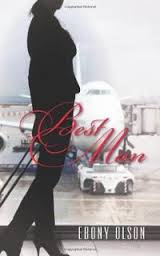
William Horwood’s Harvest is the third in a tetralogy of books written in his Hyddenworld, and it’s where we finally are seeing significant ramping up of tension leading to the culmination of the story.
Awakening (summer) left Hydden journeyman Bedwyn Stort and the others fleeing the home of the Emperor of the Hyddenworld, Bocum, with the gem of Summer, which he gives to his now-grown love, the Shield Maiden Judith, daughter of his giant-born friend Jack, and partner Katherine.
Stort has no idea where to find the next gem, and only knows that he must look to the original holder of the gem, Al Faroun, the Emperor’s former teacher and famous Hyddenworld designer.
Meanwhile, back in the human world, Professor Arthur Foale, Katherine’s surrogate father, becomes of interest to the military through his former student, Erich Bohr. When taken into custody to help ascertain what role the Hyddenworld plays in the current geological disasters, Arthur must figure out how to escape, back to his friends in the Hyddenworld.
That’s where his wyrd (fate) brings him into contact with the former Emperor’s trusted right-hand man, Nikolas Blut, who in his mentor’s abdication, has become the Emperor himself. But his intentions are being thwarted by some shady machinations of the military wing of his own government, the sinister Fyrd.
All this while the earth begins to rebel against centuries of abuse by the humans, and the retrieval of the gems is all that stands in the way of the end of days.
Harvest has what was lacking in Awakening: a significantly tense plot. And while that could be somewhat forgiven as part of the thematic structure, as summer is a time of growth and play and good times, this is the book where the series starts to come into its own.
Writing socio-political and military-type intrigue is one of Horwood’s strengths as a writer, and it is good to see this appear in the third novel. The subtleties of the political machinations and counterplots in the Hyddenworld adds an interesting comparison to the same activities in the human world, and is an interesting counterpoint.
In the years since the books of the Duncton Wood world, it has been easy to forget just how graphic Horwood can be. In Harvest, the gore and horrific deaths return. Horwood has incredible way of getting under the skin and making brutal deaths of characters in his novel get under your skin.
As this series moves on, some of the favourite characters seem to get less interesting, but this is countered by the introduction of some new and nuanced characters, particularly the new emperor Blut. It is saddening though to see the prominent female characters have less agency and exist in largely traditional female roles without good characterisation. Even the Shield Maiden Judith, who promised to be incredibly fascinating with her accelerated growth and a fierce anger derived from her pain and from acting on behalf of the earth. She becomes Stort’s love interest, to the detriment of the story.
Now that the epic is starting to get into the upswing of the climax of the series, it’s definitely at a pace that many epic fantasy readers will enjoy. Due to the level of violence and gore, it may not be suitable for preteens, but anyone older should be able to relate to it. Harvest has given a fine preview of what Horwood could do with the resolution of the Hyddenworld series, so I look forward to the final book, Winter, which I will review for SQ Mag in September. You can find my review for Spring (Book I) here.
